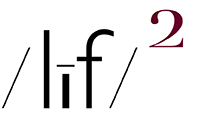Quality butcher ~ Scotland (embiggenable)
(embiggenable)
(embiggenable)
(embiggenable)
(embiggenable)
“Photographs, which cannot themselves explain anything, are inexhaustible invitations to deduction, speculation, and fantasy.” ~ Susan Sontag
IN MY LAST ENTRY I PROCLAIMED THAT, re: the medium of photography and its apparatus, it’s the same as it ever was. I believe that to be true albeit with one notable exception; the Major League Division of the Fine Art Photography World. To wit…
Over the past decade or two, fine art photo galleries and art institutions have been taken over-I would venture to write”hijacked”-by the Academic Lunatic Fringe. That is, at the directorial level graduate degrees-MAs /MFAs-are the norm and, consequently, the work being exhibited or acquired adheres to the ALF dictum of meaning trumps visual content. Or, in other words, what a picture means is much more important than what a picture depicts. Concept is the thing, which quite frankly is to be expected of academia, aka: the home of ideas.
The unfortunate (iMo) results are two-fold; 1) most ALF pictures are, to my eye and sensibilities, visual flops, and, 2) the pictures are always accompanied by a bloviating art speak explanation, re: what the pictures mean. The explanations are, iMo, virtually indispensable inasmuch as the pictures, in and of themselves, are rarely self-explanatory. In fact, after being told by a picture maker exactly what his/her pictures are about, I rarely see in his/her pictures whatever it is the maker is trying to express.
“University presses [ed. +fine art photo book publishers] increasingly hold to the policy that requires books of pictures to incorporate “substantial” texts…. layering together pictures with the photographer’s words, [ed. or more likely an academic’s essay] but also sandwiching the concoction between slabs of social—scientific balloon bread. ~ Robert Adams
To be completely honest, I should make it clear that my dislike, re: this sad state of photographic affairs, is predicated upon a very selfish desire to be visually engaged when viewing photographs on a gallery / art institution (or even online) wall. That is, as opposed to pictures of the self-pyschoanalyzing, navel gazing “investigations” by some so-called lens-based artist’s obsession with the “intersection” of some aspect of a social-scientific balloon bread concept and his/her inner self/life.
